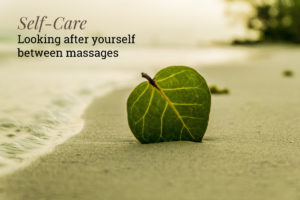 Self-Care – Looking After Yourself Between Massages
Self-Care – Looking After Yourself Between Massages
Wouldn’t it be amazing if we could have a massage every day of the week? While that may be unrealistic, we can make the most of our massage treatments by doing some self-care between massages.
First rule – drink water!
There’s a reason why your therapist gives you water after a treatment; it hydrates your body and keeps your muscles relaxed. Water is great for your skin and muscles, while potentially helping to prevent headaches.
Keep up the stretching
A common problem for many is feeling achy and tight after a day’s work. When stretching is part of your daily routine, it will help ease muscle aches and soreness. If you want to make the effects of your massage last longer, stretch between sessions.
It doesn’t matter when you fit your stretches in, as long as you make a habit of it.
Stretches shouldn’t hurt. Ease into stretches gently, and holding them for at least 30 seconds. This will give you better results than shorter, deeper stretches.
Epsom Salts
Epsom salt baths are great for keeping muscle aches and stiff joints at bay – they contain magnesium which is also good for relieving stress. To prevent soreness after a massage, add Epsom salts to your bath as directed and relax.
Hot and cold therapy
In between massages you may begin to feel a build-up of tension – nip it in the bud with heat therapy. Applying heat can help to sooth aching muscles and relieve any tightness and tension. Heat can also improve and stimulate blood flow to the area. Try a heating pad, or heat up a damp towel in the microwave for warm moist heat.
If you injure yourself in between massage sessions, try using cold therapy to numb the pain and decrease inflammation. Cold therapy is good for strains, sprains and other minor injuries (if you’re unsure, or are in serious pain, see your healthcare provider).
For severe pain and/or swelling, take a cold pack, a frozen water bottle or even frozen vegetables in a bag, wrap it in a towel and place on the affected area. If you have sore feet, try rolling the frozen bottle under your foot.
You can alternate between hot and cold therapy but always leave a period in between for your body to adjust.
One last and very important tip:
Make massage therapy part of your regular self-care routine. If you’re unsure about how often you need a massage, the best person to ask is your therapist. They will know if you need extra sessions or just maintenance care, and will make sure your massage is tailored to your needs.
